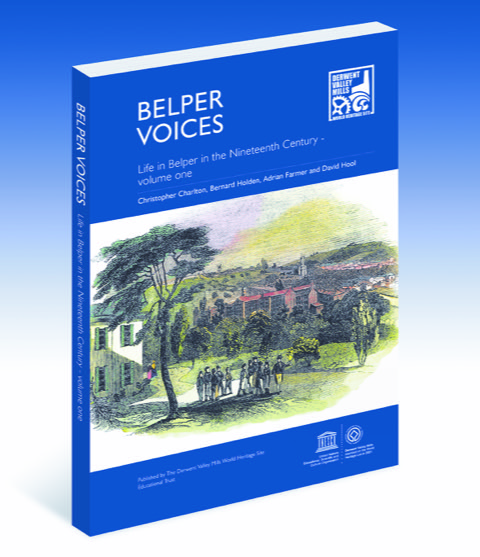
This is the first of two volumes of studies of life in Belper in the nineteenth Century. It extends the biography of the town begun years ago in The Strutts and the Arkwrights. Volume one describes the town's first transport links by road and by rail.
The exquisite contemporary drawings by Samuel Russell punctuate an account of how the railway was brought through Belper, joining the town to the local and the national networks. This was the century that saw the Belper horse nail makers enjoy their greatest prosperity and then its loss as it was snatched away by the imported and machine made nails that extinguished their trade.
The book describes the nailers' union's fight to stem this loss of work which extended even to paying men to blow up non union workshops; but by 1900 the industry had died. For many, the Workhouse beckoned.
For the Strutts also, the second half of the century found them confronting grim realities. Their mills were no longer competitive, and by 1897 it was with some relief they sold out to the English Sewing Cotton Company.
The book is a worthy new member of the Trust's portfolio; like its predecessors it is carefully researched, generously illustrated and written in accessible english.

This is the Trust’s second book devoted to life in Belper in the nineteenth century. Thanks to the Trust securing generous financial support it is substantially larger than its predecessor. It retains the format that has become a hallmark of the Trust’s publications with copious illustrations and extensive quotations from contemporary sources. There is much in the book that breaks new ground. It features the extraordinary contribution to the development of the town, its administration and the shaping of its essential services by three generations of the Pym family. Other chapters describe the strategy the young town adopted to look after its poor creating a patchwork of individual philanthropy and self help while for those who sank into absolute poverty there was the workhouse. The building of the Belper Workhouse ( known now as the Babbington Hospital ) is described in detail. This account is accompanied by episodes from its later life as the Guardians who administered the Poor Law struggled with the challenges of unwelcome commands from London and disagreements within their own ranks as to where help was to be given. Should they, as the honourable Frederick Strutt demanded, deny money to the wives and families of men who were in prison? How the Guardians responded to this and many of Strutt’s other propositions is all in the book.
View details...
This is the first of two books describing life in Belper in the nineteenth century. These were the years that saw the town establish itself within the county as an administrative centre and, with its early railway connection, a flourishing horse-nail industry, and the seemingly inexorable growth of the Strutts' empire, what could go wrong? But the railway didn't bring investment; handcrafted nails were overtaken by those made by machine and then by imported products; and the mills contracted and were sold. The growth of the town stalled.
View details...